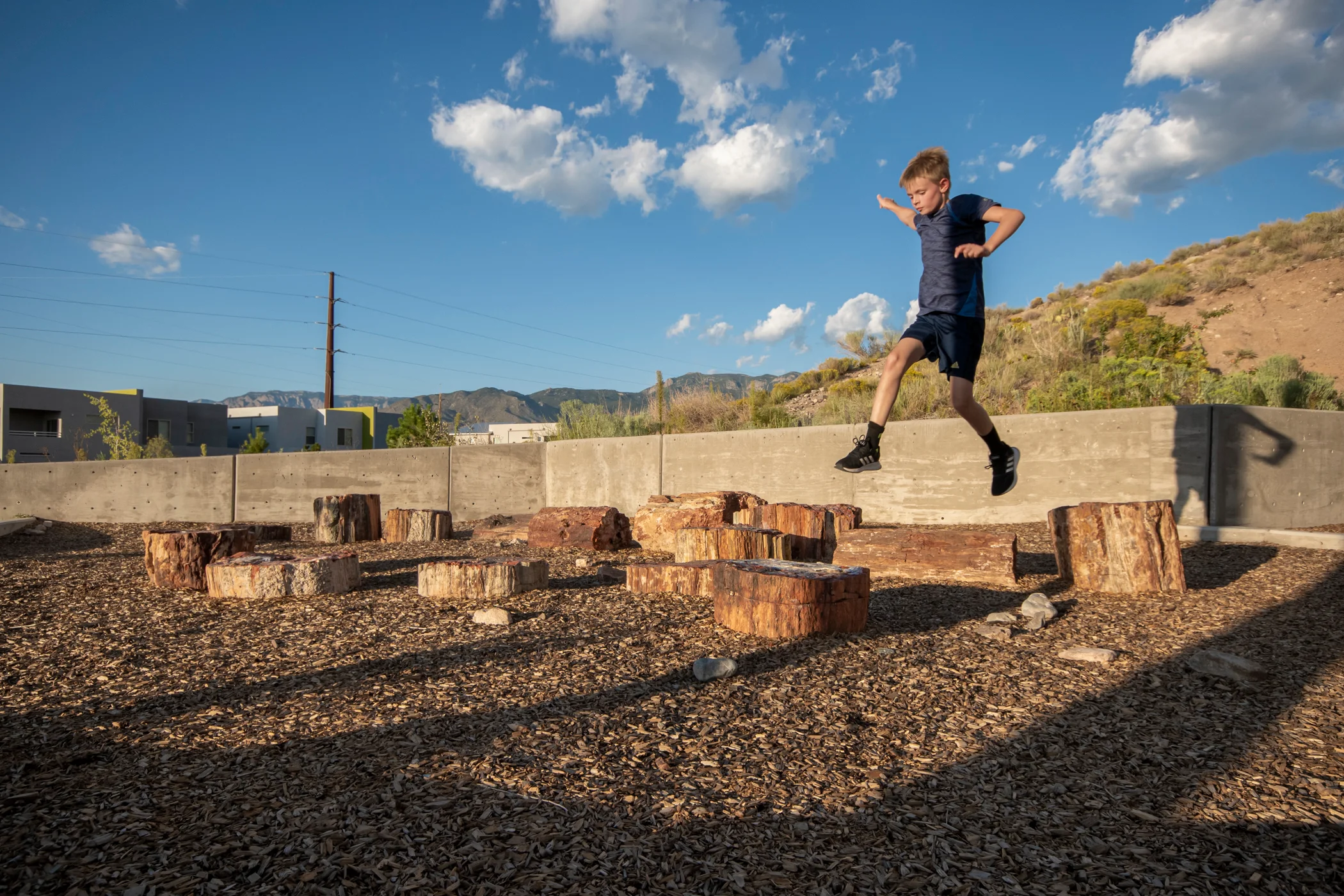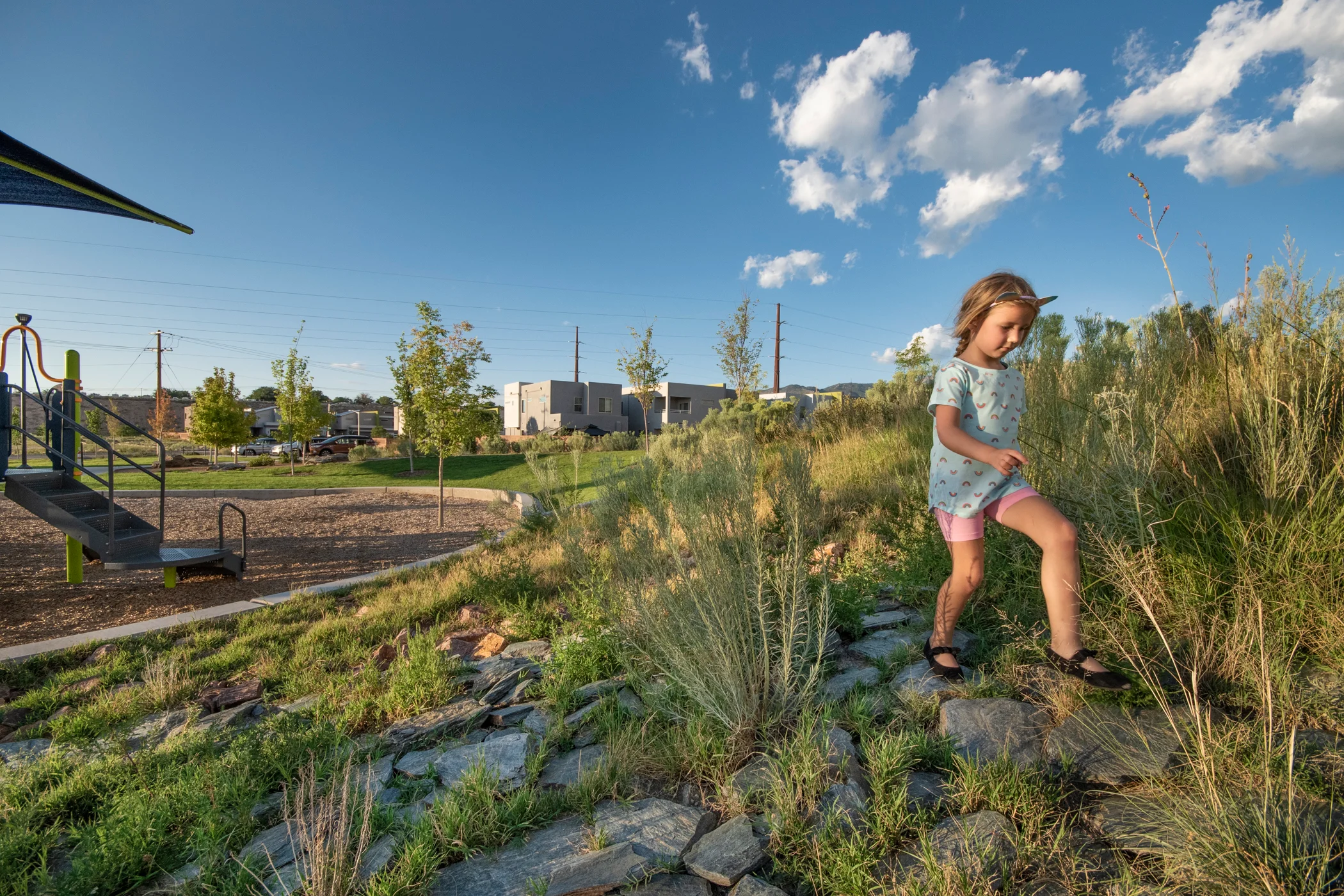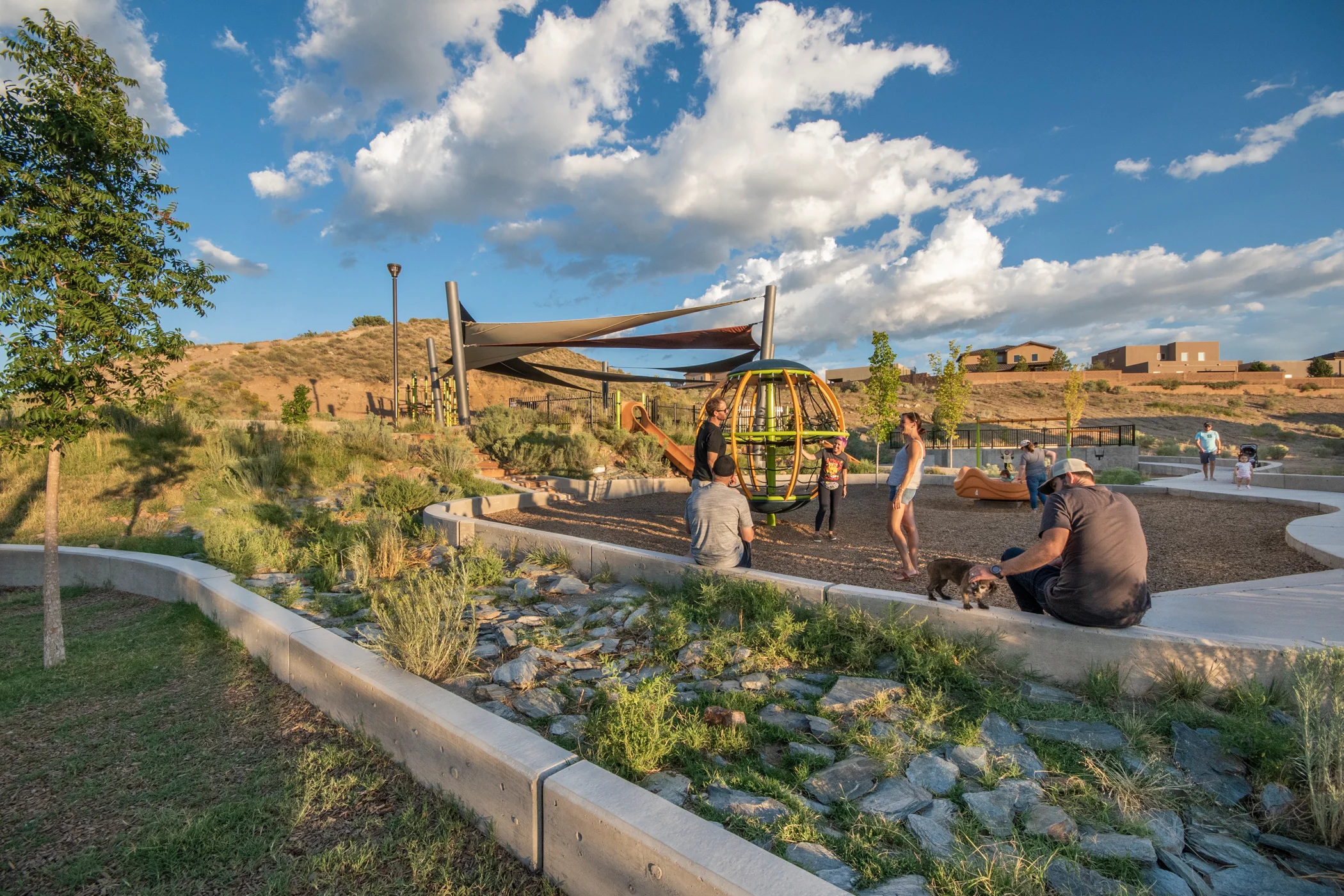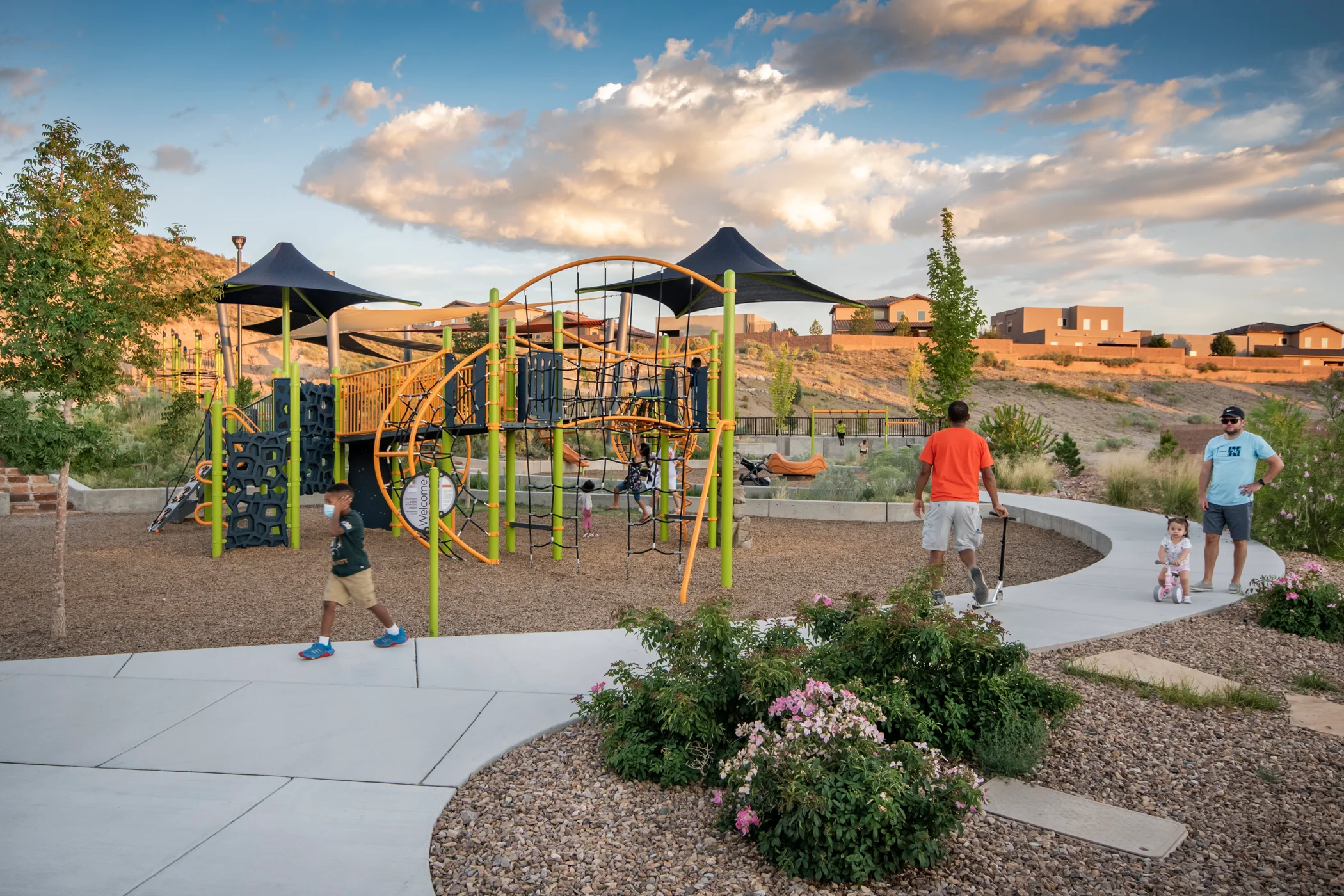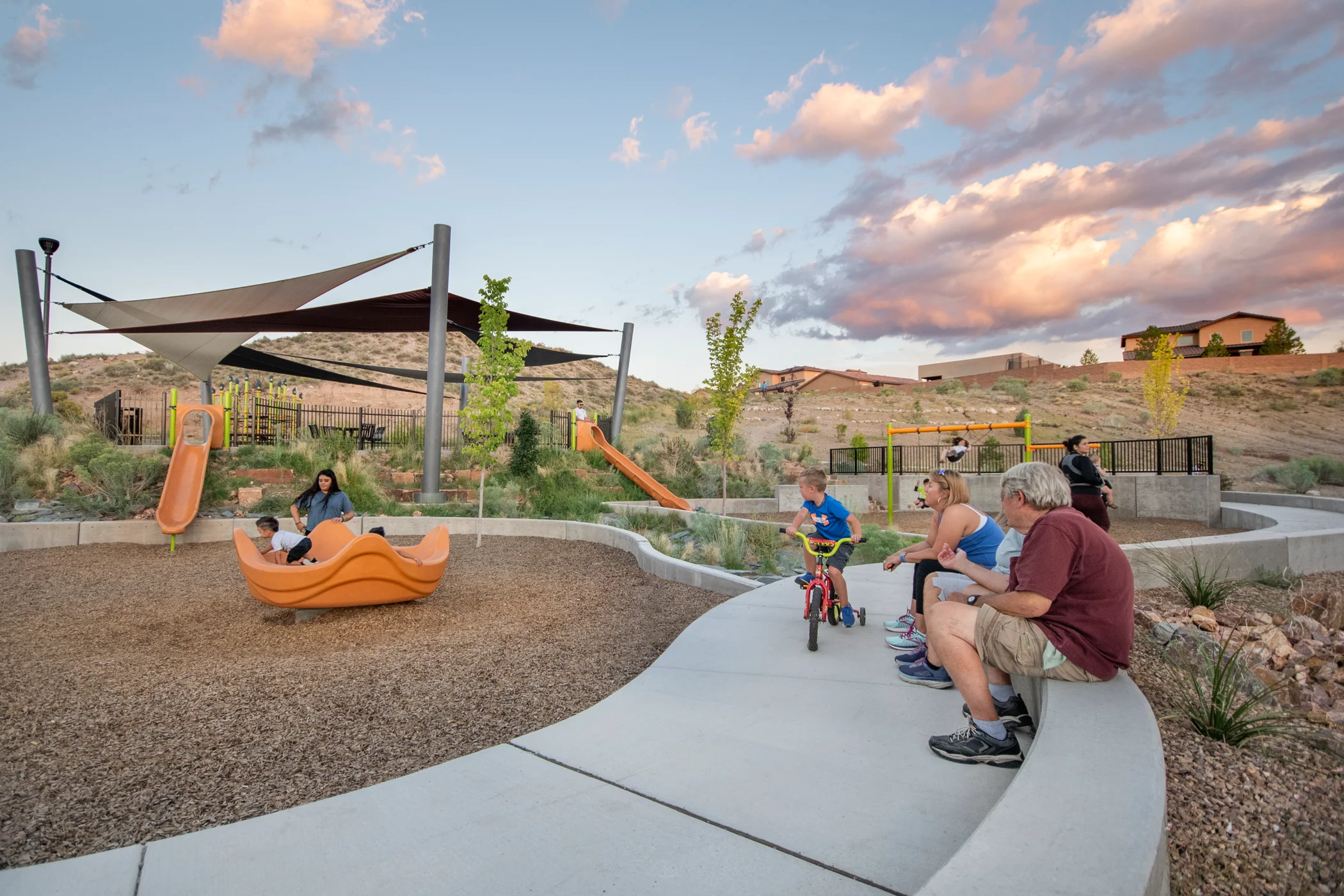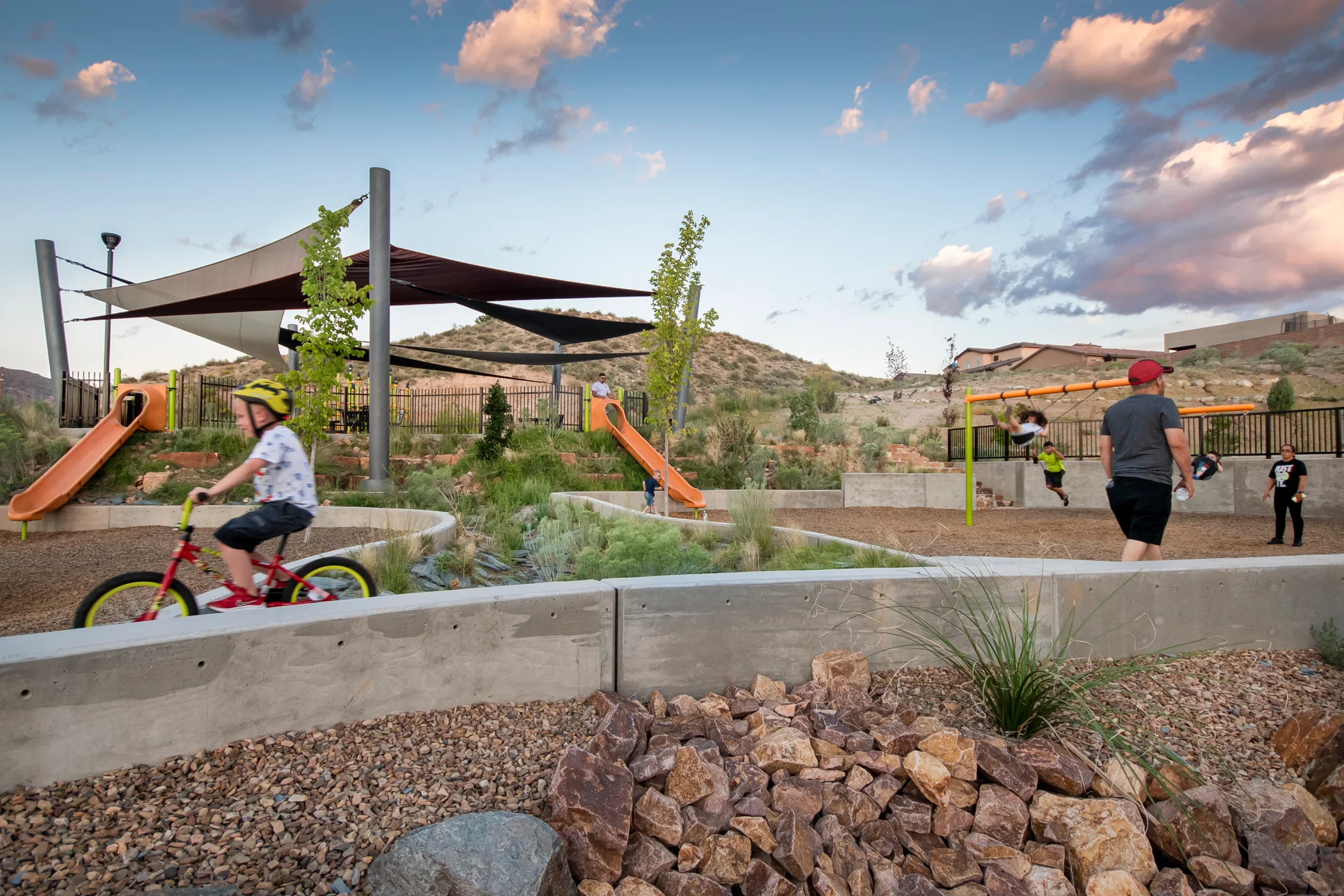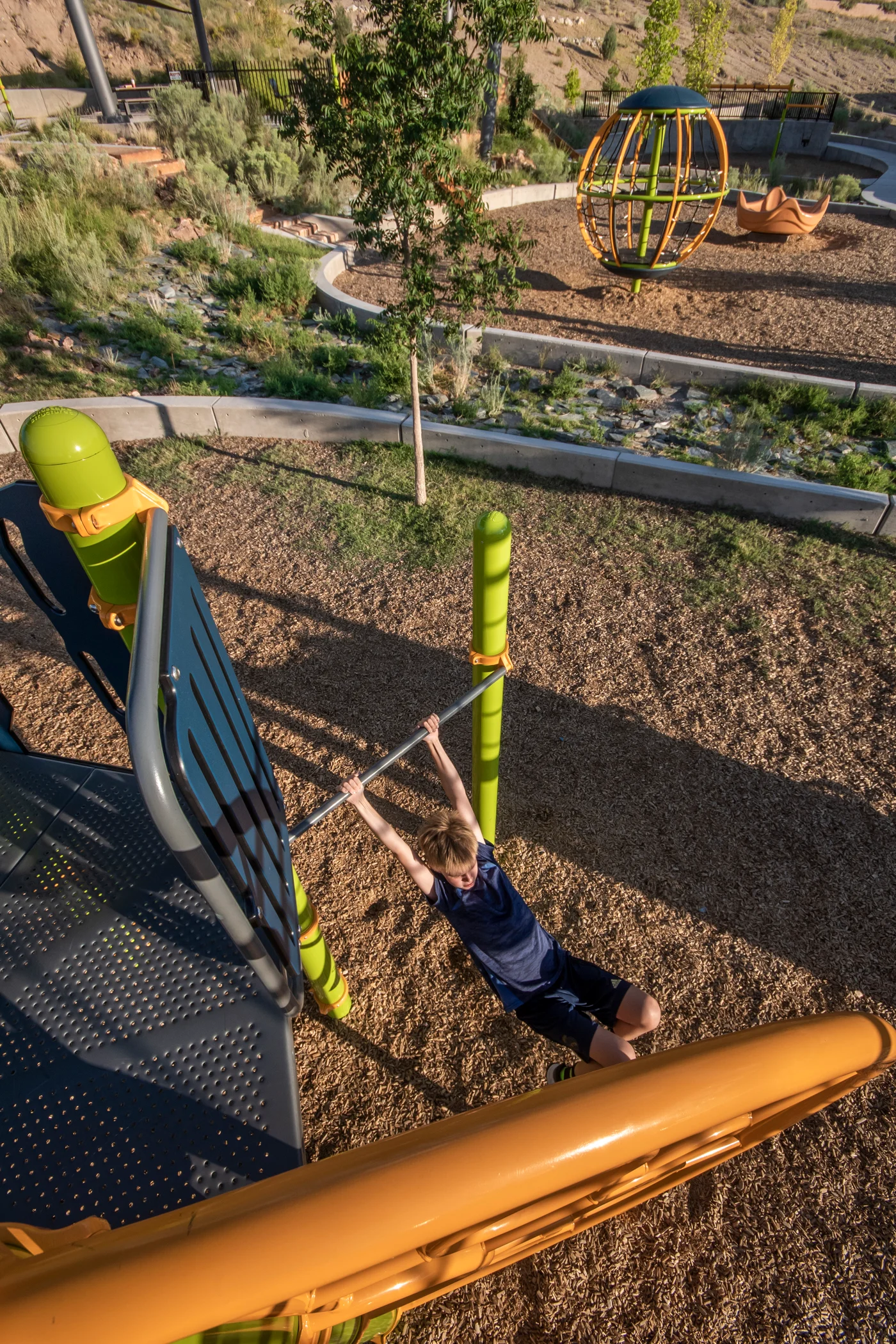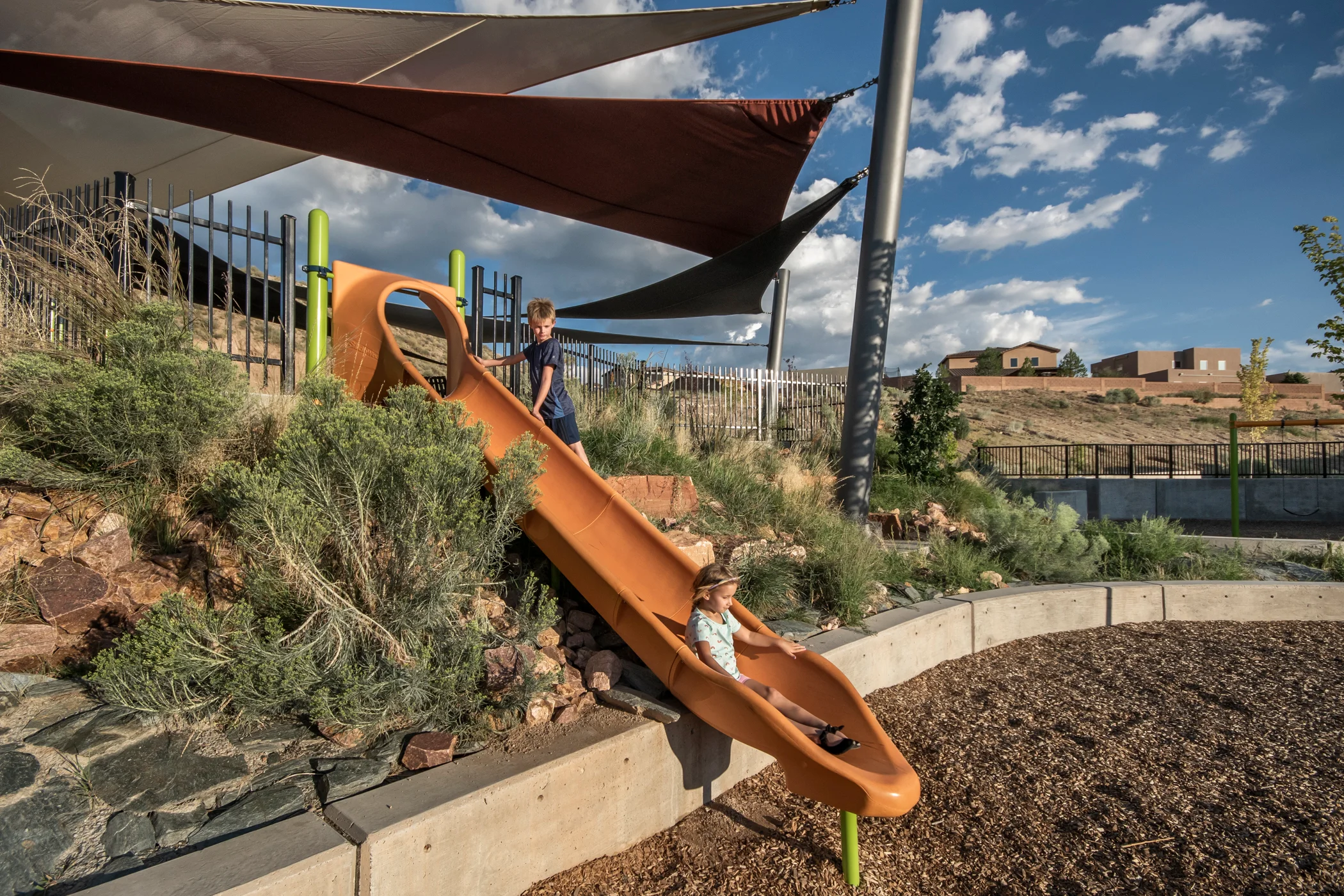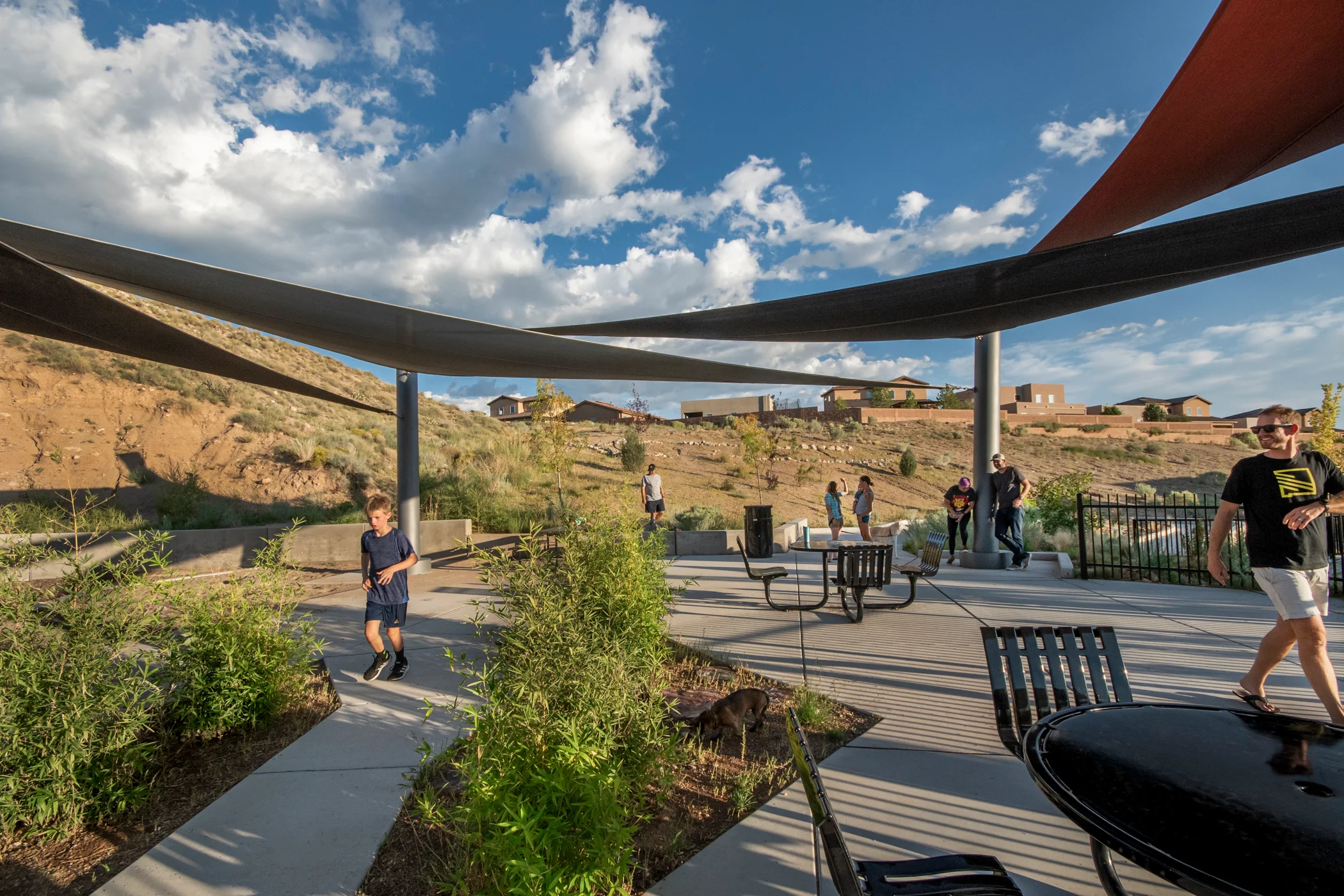Nestled into the foothills of Albuquerque, it takes advantage of the natural topography and native vegetation to create a dynamic setting.
Juan Tabo Hills Park is a stunning example of a park that provides a truly unique user experience. Nestled into the foothills of Albuquerque, it takes advantage of the natural topography and native vegetation to create a dynamic setting. The design immerses visitors into a space that blends a wide range of gathering and play spaces.
The concept for the project was to create an environment that provides opportunities for users of all ages and abilities to share in the joy of play. The park is based on the idea that play is vital to early childhood development by encouraging movement, creativity, social interaction, exploration, and sensory stimulation. The design is the culmination of the evolution of play environmental design that incorporates graduated challenges, connections to nature, unscripted activity, and full sensory activation.
The manufactured play equipment has a variety of options for climbing, sliding, spinning, and swinging. The natural stone steps, groundcover materials, and terraced seating have a rich blend of textures and colors. Petrified wood "steppers", sand digging areas, and loose materials allow children to manipulate objects. Diverse plantings create different senses of scale and burst with colors, textures, and aromas.
The various "play pockets" are arranged in a way that mixes a variety of passive and active recreation. The spaces between these pockets are inherently part of the play experience. The grade changes and curvilinear walkways draw people through the site. All these elements work in harmony to create a sense of discovery and adventure. The layout also integrates seating and overlooks that allow adults to be proximally engaged in the play activities.
The plantings and stone materials not only create a unique park character, but they also play a primary role in the design’s environmental resiliency. Dense revegetation seeding thrives on non-irrigated slopes, stabilizing highly erosive native soils. Infiltration basins slow the flow of stormwater addressing water quantity and quality concerns. Native plants create habitat pollinator and wildlife habitat within the urban context. A highly efficient irrigation system waters the limited turfgrass, balancing the needs of the site users with the precious use of water in the arid landscape.
Juan Tabo Hills Park has quickly become a prized neighborhood amenity that brings people together. The details are subtle but effective, creating a place that just feels right. The success of this design has influenced not just other parks, but has also shaped City policy toward integrated environmental design of flood-control infrastructure, low-impact development, and loss of urban habitat.


